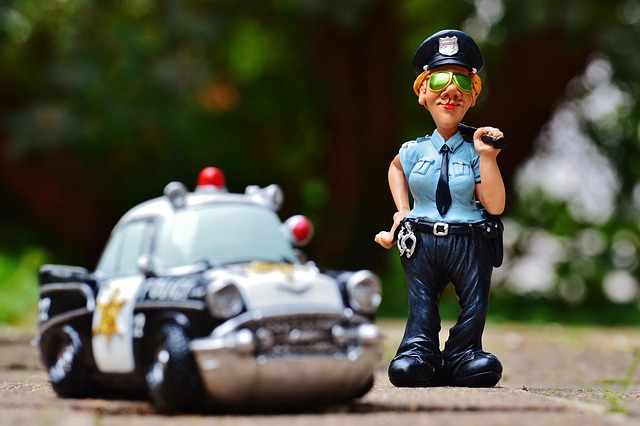Learn how to register your car in California with our step-by-step guide. Before you begin, understand the essential requirements for car registration in the Golden State, including the need for a valid title and DMV VIN verification. Gather all necessary documents, prepare your vehicle for inspection, and transfer ownership. Then, visit a local California DMV office to complete the registration and title exchange process. Finally, discover post-registration tasks like insurance, tags, and routine maintenance.
- Understand the Requirements for Car Registration in California
- Gather Necessary Documents for DMV Vin Verification
- Prepare Your Vehicle for Inspection and Title Transfer
- Visit a California DMV Office for Registration and Title Exchange
- Post-Registration Steps: Insurance, Tags, and Maintenance
Understand the Requirements for Car Registration in California

Before diving into the registration process, it’s crucial to understand the requirements for car registration in California. The California Department of Motor Vehicles (DMV) mandates several key steps, including a thorough vehicle inspection and verification of your car’s unique identification number (VIN). This VIN verification is a critical component, ensuring that your vehicle meets safety standards and is road-ready.
During this process, you’ll typically need to present valid documents such as proof of ownership, insurance, and identification. Additionally, for older vehicles or those with historical significance, further documentation might be required. Leveraging services like mobile VIN inspection can simplify the verification step by allowing a professional to conduct the necessary checks remotely, saving you time and effort.
Gather Necessary Documents for DMV Vin Verification

Before heading to the DMV for car registration, ensure you have all the necessary documents for the dmv vin verification process. This includes your vehicle’s registration certificate, proof of insurance, and a valid driver’s license. Additionally, gather important papers related to ownership, such as a purchase agreement or title document. A mobile vin inspection or use of a mobile vin verifier can be beneficial here; these services allow you to obtain your Vehicle Identification Number (VIN) through a simple online process or mobile app, saving time and effort.
Having the VIN ready is crucial for the verification process. The DMV will cross-reference this unique identifier with their records to ensure the vehicle’s history aligns with the information provided during registration. Properly prepared documents streamline the dmv vin verification procedure, making car registration in California more efficient and hassle-free.
Prepare Your Vehicle for Inspection and Title Transfer

Before you can register your car in California, ensure that your vehicle is ready for inspection by preparing all necessary documents and ensuring it meets state standards. The first step involves verifying the Vehicle Identification Number (VIN) to establish the vehicle’s history and authenticity. This process, known as DMV VIN verification, is crucial to prevent fraud and ensure compliance with California’s regulations. You can facilitate this through traditional methods or consider a convenient alternative like mobile VIN verification services that offer a vin inspection right at your location.
Have your registration documents ready, including the title, proof of insurance, and any relevant maintenance records. Additionally, ensure that all lights, brakes, horn, and other safety features are functioning properly to pass the state’s safety inspection. By completing these preparatory steps, you’re one step closer to smoothly transferring your car’s title and officially registering it in California.
Visit a California DMV Office for Registration and Title Exchange

To register your car in California, one of the essential steps is visiting a DMV office for registration and title exchange. This process involves several critical components, including vehicle identification number (VIN) verification. You’ll need to present valid documentation, such as proof of ownership, along with any required fees. The California DMV will conduct a VIN inspection to ensure the vehicle’s identity matches the information on the registration documents.
A mobile vin inspection or mobile vin verification service can also be utilized for added convenience. These services allow you to get your car registered without visiting a DMV office directly, saving you time and effort. However, it’s crucial to ensure that the chosen service is reputable and authorized by the California DMV to avoid any potential issues with the registration process.
Post-Registration Steps: Insurance, Tags, and Maintenance

After successfully registering your vehicle with the California DMV, there are several crucial post-registration steps to ensure everything remains in order. One of the most important aspects is securing insurance for your car. California requires all vehicles to be insured, and evidence of insurance must be provided during registration. It’s essential to choose a reputable insurance provider that meets the state’s minimum requirements and aligns with your personal needs.
Additionally, you’ll need to obtain vehicle tags (license plates) from the DMV or designated agents. These tags are not only for identification but also serve as a constant reminder of your vehicle’s registration status. Regular maintenance is another key component. Schedule routine check-ups with trusted mechanics to ensure your car remains safe and roadworthy. Don’t forget, proper documentation, including proof of insurance and registration, should be easily accessible in case of an inspection, and a mobile vin inspection or vin verifier can assist in quickly verifying your vehicle’s history.
Registering a car in California involves several straightforward steps. By understanding the requirements, gathering essential documents for DMV VIN verification, preparing your vehicle for inspection and title transfer, and visiting a local DMV office, you can efficiently complete the process. Once registered, remember to obtain insurance, display tags, and maintain your vehicle according to state regulations. Following these steps ensures your car is legally registered and ready to hit the California roads.
